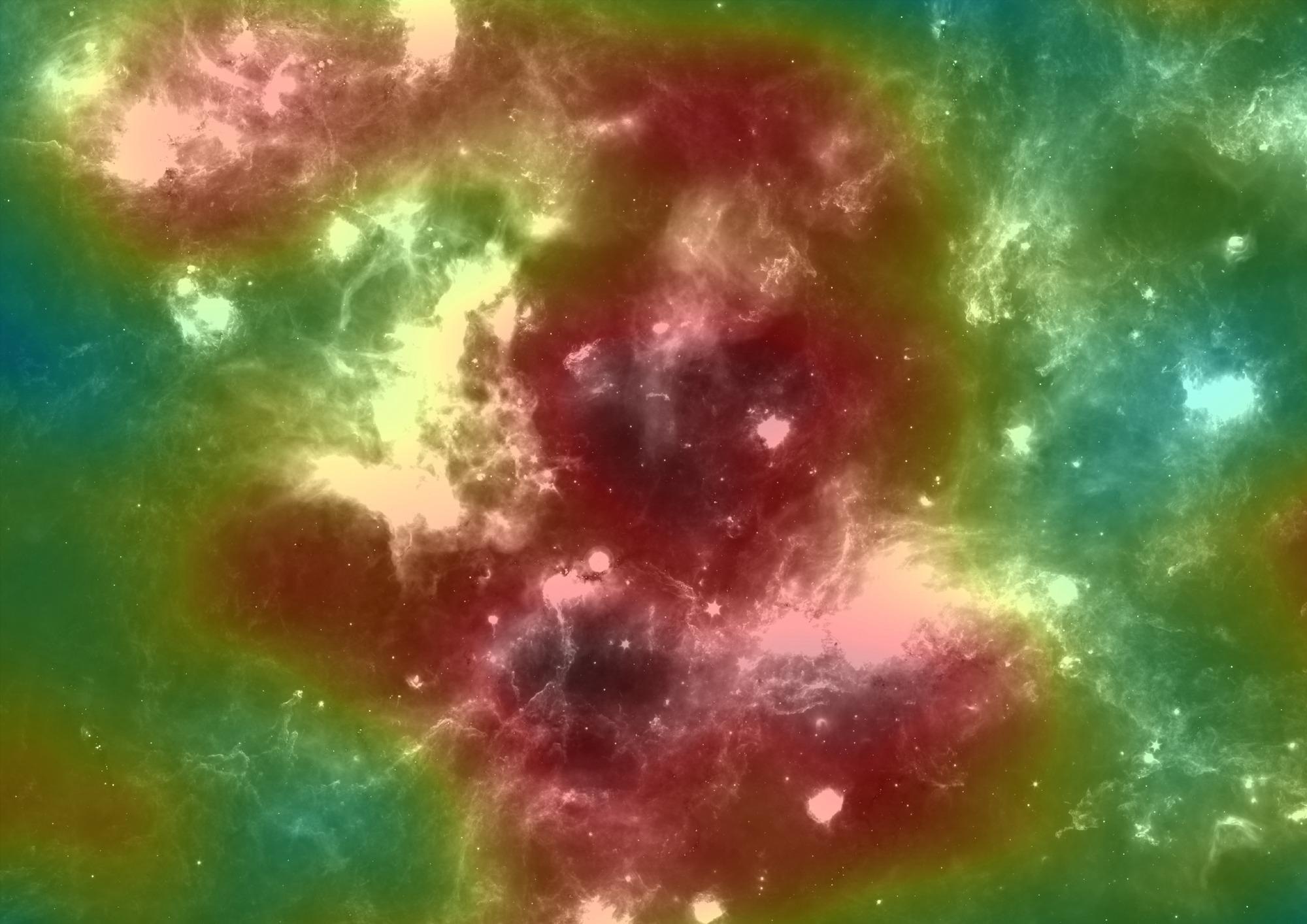Mar 12 2021
In astrophysics, a long-standing question seems to be answered at last by a collection of huge, high tech water tanks installed on a mountainside in Mexico. The High Altitude Water Cherenkov (HAWC) data indicates that the highest energy cosmic rays are emitted not from supernovae, but from star clusters.
 An infrared image of the dust clouds in the Cocoon region taken with the Spitzers Space Telescope’s IR photometer. The HAWC TeV gamma-ray excess (color from green to yellow to red) is overlaid on the 24 micrometer infrared image of the dust clouds in the Cocoon region from the Spitzer Space Telescope (white regions). Image Credit: eV: Binita Hona (HAWC Collaboration), IR: Hora et al., Spitzer’s Growing Legacy, ASP Conference Series, 2010, P. Ogle, ed.
An infrared image of the dust clouds in the Cocoon region taken with the Spitzers Space Telescope’s IR photometer. The HAWC TeV gamma-ray excess (color from green to yellow to red) is overlaid on the 24 micrometer infrared image of the dust clouds in the Cocoon region from the Spitzer Space Telescope (white regions). Image Credit: eV: Binita Hona (HAWC Collaboration), IR: Hora et al., Spitzer’s Growing Legacy, ASP Conference Series, 2010, P. Ogle, ed.
The origin of the highest-energy cosmic rays in the galaxy has been an open question in astrophysics for more than 60 years. Very few regions of the galaxy have both the power to produce high-energy particles and the necessary environments to boost those particles to the petaelectronVolt (PeV) energies that are seen in the highest-energy cosmic rays. And most of the expected regions to produce the particles have been ruled out in recent years by high-energy observatories.
Patrick Harding, Astrophysicist, Los Alamos National Laboratory
“In this paper, we discover high-energy gamma rays coming from Cygnus OB2, a birthplace of massive stars located inside the ‘Cygnus Cocoon’ superbubble, meaning it is likely the source of these highest-energy galactic cosmic rays,” added Harding, who is doing his research using HAWC.
The detection tanks located at the HAWC observatory next to Puebla, Mexico have observed cosmic rays hitting the Earth’s atmosphere at petaelectron Volt (PeV) energies.
This study demonstrates that in the place supernovae, star clusters like the Cygnus Cocoon act as 'PeVatrons'—PeV accelerators that can make high-energy particles that travel throughout the galaxy.
The algorithms employed to examine the highest energy HAWC photons, which were used in a paper published recently in Nature Astronomy, were designed by Kelly Malone, a Los Alamos postdoctoral researcher.
The paper which first determined the Cocoon as a considerable emitter of high-energy gamma-rays by making use of the HAWC high-energy catalog was also guided by Malone, who is the leader of the Galactic Science Working Group within HAWC.
“HAWC is the first observatory to detect gamma rays from across the sky with energies above 100 TeV. This high-energy reach allows us to answer fundamental questions about our galaxy,” stated Malone.
The implications of this result are appropriate for various areas of Los Alamos astrophysics study: The transfer of cosmic rays along with their interactions using the surrounding medium are of interest at the Laboratory, and specifically, Los Alamos analyzes which kinds of astronomical sources can efficiently expedite cosmic rays to high energy, and which acceleration mechanism powers it.
Determining a source of such high energy cosmic rays will result in better theoretical insights into these mechanisms.
The study was principally carried out by Petra Huentemeyer, professor of physics at Michigan Technological University, together with MTU graduate Binita Hona (currently a postdoc at the University of Utah), doctoral student Dezhi Huang, former MTU postdoc Henrike Fleischhack (now at Catholic University/NASA GSFC/CRESST II), Sabrina Casanova at the Institute of Nuclear Physics Polish Academy of Sciences in Krakow, Ke Fang at the University of Wisconsin and Roger Blandford at Stanford University, along with several other collaborators of the HAWC Observatory.
HAWC study is financially supported by the National Science Foundation (NSF), the U.S. Department of Energy Office of Science, the LDRD program of Los Alamos National Laboratory, CONACyT, México, and the Polish Science Centre (among others).
Journal Reference:
Abeysekara, A. U., et al. ( 2021) HAWC observations of the acceleration of very-high-energy cosmic rays in the Cygnus Cocoon. Nature Astronomy. doi.org/10.1038/s41550-021-01318-y.